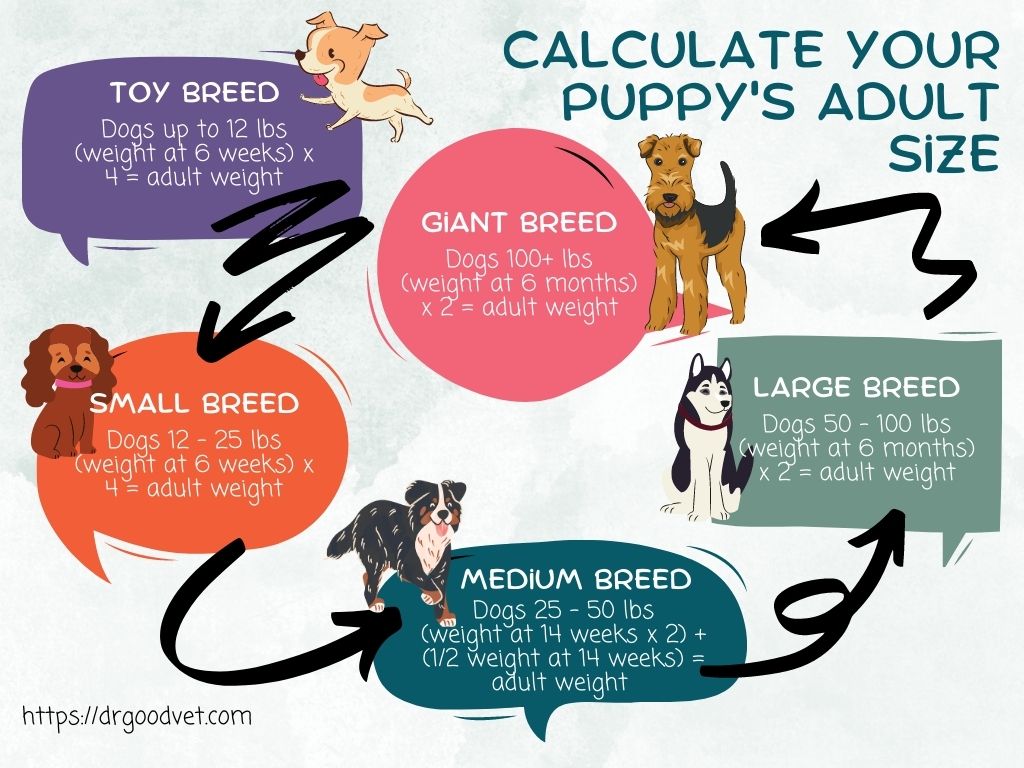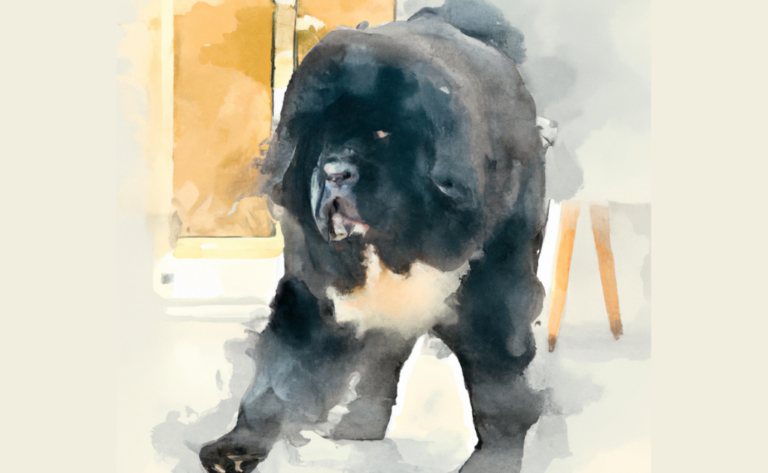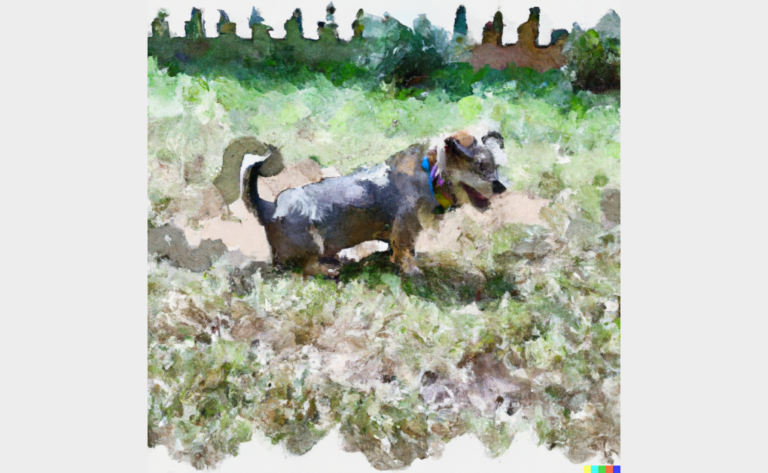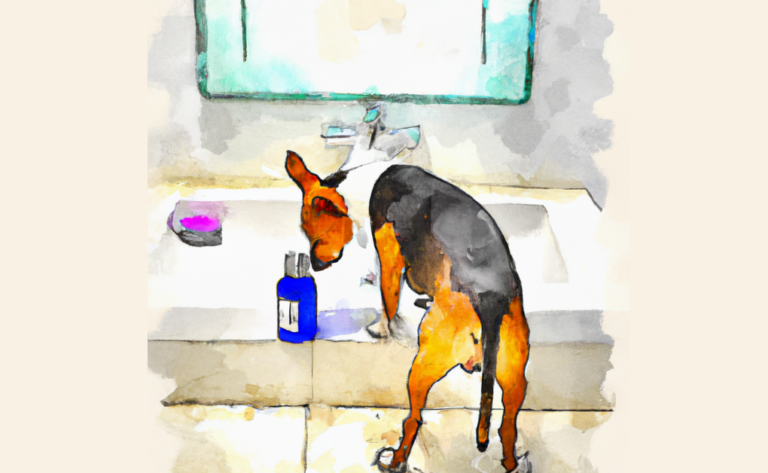How Did Your Puppy Get So Huge?
Introduction
Maggie was overjoyed when she brought her adorable little puppy, Max, home for the first time. But as the weeks went by, Max grew at an alarming rate, and Maggie couldn’t help but wonder how her tiny furball had transformed into a giant before her eyes. Confused and intrigued, she decided to delve into the factors that contributed to Max’s growth, from genetics to diet and everything in between.
When you initially brought your adorable, small puppy home, it seemed like it could forever nestle in your hands. Yet, almost instantly, your petite pup has transformed into a large, lively adult dog. As a pet parent, you may wonder how is your puppy growing so fast.
Our most recent blog post aims to decode the journey from puppyhood to adulthood, outlining the factors contributing to a dog’s growth. We will delve into considerations such as breed size (male dog, medium dog, or otherwise), genetics, nutrition, and overall health, all of which shed light on this intriguing transformation. We will also look at elements like good behavior, puppy training, and socialization, which, although they might not directly influence the size, are crucial aspects of your puppy’s growth into an adult dog. Furthermore, we’ll discuss potential issues like bloat and aggressive behavior that could occur in adolescent dogs.
So, join us as we unravel the growth process, assisting you in understanding the diverse factors that contribute to your cute little puppy suddenly occupying most of the sofa space and the importance of positive reinforcement during these changes.
Paws Can Tell You the Adult Weight of Your Puppy
It’s commonly believed that the size of a puppy’s paws can indicate how large they will be when they become adults. This is because breeds destined to grow larger have larger paws at a young age to support their increasing weight and size. However, while there is a correlation between paw size and adult size, it is not an absolute science and should not be used as the sole predictor of how big a puppy will get.
The exact relationship between a puppy’s paw size and its adult size can be influenced by various factors, including breed, genetics, and overall health. Certain breeds naturally have larger paws, even if they aren’t the largest dog breeds overall. For example, Basset Hounds and Bulldogs have large paws but don’t grow especially tall.
On the other hand, breeds like Great Danes and Saint Bernards, known for their large size, will often have large paws during puppyhood. In these cases, the size of their paws can give a clue about how big they will be as adults.

To get a more accurate estimate of your puppy’s adult size, consider various factors, including the size of the parents (if known), the breed’s average size, and the rate at which your puppy grows. Additionally, a veterinarian can give you a more precise estimate based on professional knowledge and experience.
Remember, while the size of your puppy’s paws may give you a clue of its adult size, there are no guaranteed methods to predict the exact size a puppy will be once fully grown. And regardless of size, each puppy grows into a unique and special family member.
Other Size Indicators of an Adult Dog
Aside from the paw size, several other indicators can give you an idea about how large your puppy will be when it grows into an adult dog. Remember, while these indicators can provide estimates, they could be more foolproof as growth can be influenced by many factors, including diet, environment, and overall health.
- Breed: A dog’s breed is often the clearest indicator of its potential adult size. Each breed has a range of sizes that are considered standard. For instance, a Yorkshire Terrier typically weighs between 4 and 7 pounds as an adult, while a Saint Bernard can weigh anywhere from 120 to 180 pounds. If your dog is a mixed breed, you might consider the size of the contributing breeds for an approximation, though genetics can sometimes yield surprising results.
- Parents’ Size: Observing the size of your puppy’s biological parents can give you a clear idea of your puppy’s future size, especially if both parents are of the same breed. Even in mixed breeds, seeing the parentage can provide a rough estimate of the puppy’s size. Remember, a puppy might be larger or smaller than its parents, but generally, it should fall somewhere in between.
- Bone Structure: Puppies growing into larger dogs often have broader paws, a heavier skeletal structure, and robust joints to support their substantial adult weight. A veterinarian can help you assess your puppy’s bone structure and potentially predict its adult size.
- Loose Skin: Some puppies have quite a bit of loose skin. Breeds known for growing into large dogs often have extra skin that they eventually grow into as they mature. Breeds like the Basset Hound or the Bloodhound are notable examples of this.
- Weight: Weight can be a helpful indicator when predicting a puppy’s adult size. For many breeds, you can roughly double a puppy’s weight at 14 to 16 weeks to estimate their adult weight. However, this method can be less reliable in large breed dogs that continue growing beyond the first year.
- Growth Plates: The growth plates in a puppy’s bones can give you a very good indication of their adult size. They exist at the ends of the long bones and are areas where new bone cells are produced for growth. As the dog matures, these plates harden and stop producing new cells, signifying that the dog has reached its full size. Vets can use X-rays to determine the state of the growth plates.
Each method can estimate your puppy’s adult size, but it’s essential to remember that every dog is unique. Factors such as diet, overall health, and care can all impact a puppy’s growth. It’s always best to consult a veterinarian for the most accurate estimate and health advice.
Large Breeds of Canines
There are many different breeds of dogs that are classified as large. Here are some examples:
- Great Dane: Known as the ‘gentle giant,’ the Great Dane is often the tallest dog breed and can weigh up to 200 pounds. Despite their size, they’re known for their friendly and patient nature.
- Saint Bernard: Saint Bernards are famously large and muscular dogs that can weigh between 140 and 180 pounds. They are famously friendly and good with families.
- Rottweiler: Rottweilers are robust and powerful, typically weighing between 80 and 135 pounds. They are loyal, protective, and known to be good guard dogs.
- Newfoundland: Newfoundland is a large, strong dog that weighs up to 150 pounds. They are well known for their excellent swimming ability and are often used for water rescue.
- Mastiff: There are various types of Mastiffs, such as the English Mastiff, Bullmastiff, and Tibetan Mastiff. All these breeds are large and powerful, often exceeding 150 pounds. Mastiffs are known for their gentle and calm nature.
- Irish Wolfhound: This is one of the largest and tallest breeds in the world. They are historically known for their hunting skills, particularly with wolves and elk.
- Bernese Mountain Dog: Bernese Mountain Dogs are large, strong, and agile and are known for their ability to pull loads. They have a friendly and calm disposition, making them excellent family pets.
- Alaskan Malamute: Alaskan Malamutes are robust and powerful dogs built for stamina and strength. They are friendly, affectionate, and known to be good family pets.
Remember, a breed’s size does not determine its temperament or suitability as a pet. Each dog has its unique personality and should be treated as an individual. Before bringing a large dog into your home, ensure you have the proper space, time, and resources to care for it.
Calculate Your Puppy’s Adult Size
Giant breeds grow faster than smaller ones, so if you want a rough idea of what size dog you’re dealing with, look away from puppy photos. Instead, check out our chart below.

Refrain from assuming that a large breed will always weigh twice what an average-sized dog does. Many factors influence growth rates, including genetics and nutrition.
Predicting the Size of Mixed-Breed Dogs
Estimating the adult size of a mixed-breed dog can seem like deciphering a cryptic puzzle, as they encompass characteristics from both parent breeds. Nevertheless, employing a mix of the following methods might offer you a more comprehensive, albeit approximate, projection of their eventual size:
- Evaluate Parental Size: To a large extent, your puppy’s growth may be predicted by considering the size of its parents. If both parents are accessible for viewing, an educated assumption can be made that your puppy’s size will likely land within their range. However, it’s crucial to note that genetics can be inconsistent. If one parent is substantially larger than the other, the puppy could grow to match the larger parent, remain similar to the smaller one, or end up somewhere in between.
- Assess Growth Pace: Tracking the rate at which your puppy develops can hint at their adult size. Large dogs usually exhibit faster and extended growth compared to small or older dogs. A puppy that quickly gains weight or experiences a lengthy growth spurt could grow into a larger adult dog. However, rapid growth spurts can also be observed in some smaller breeds, so this isn’t always a reliable indicator.
- Apply a Weight-Doubling Method: A popular approximation technique uses your puppy’s weight at a certain age. For medium to large-breed dogs, you can take your puppy’s weight at six weeks, double it, then double it again for a rough adult weight. For smaller breeds, double their weight at 12 weeks, then add half of their 12-week weight.
- Examine Paw Size: Though not entirely accurate, the proportion of a puppy’s paws relative to its body can sometimes suggest its adult size. Puppies destined to become large dogs often possess disproportionately larger paws than those expected to remain small or medium-sized.
- Seek a Veterinarian’s Opinion: For a mixed-breed puppy’s most accurate size estimate, consult a vet. They can evaluate breed characteristics, current physical development, weight and size, and other factors to make a more informed prediction.
It’s crucial to remember that these methods offer estimates, not certainties, as your puppy’s inherited genes can occasionally result in unexpected outcomes. Regardless of how big your puppy grows, their unique genetic mix will surely make them a charming and treasured part of your family.
As your puppy grows, remember to focus on other aspects, such as training it to help with bad behavior, keeping them calm, especially when visiting dog parks or dealing with potty training, and making their crate comfortable. Treats and affection are essential if you have a tired puppy on your hands at six months. Keep your dog healthy and happy for a better dog’s life, and you’ll make your experience as a pet owner more rewarding.
How Do Puppies Grow?
The process of puppy growth is compelling, unfolding through several stages, each with its distinct developmental milestones. This comprehensive understanding provides pet owners invaluable knowledge about their cherished puppies’ health and growth progression.
Neonatal Phase (0-2 Weeks)
Starting at birth and continuing for roughly two weeks, the neonatal stage marks a time of complete dependence on the mother. Puppies are born blind and deaf, with their ears and eyes closed. Their existence revolves around tactile and gustatory experiences. The growth during this stage is remarkably fast, with puppies almost doubling their birth weight within the first week.
Transitional Phase (2-4 Weeks)
This phase is marked by significant changes in the puppies’ abilities and awareness. Their eyes and ears open, allowing them to respond to light, movements, and sounds. The appearance of their baby teeth indicates the beginning of the weaning process, and they start to experiment with walking, wagging their tails, and interacting with their siblings. These developments signify the commencement of their physical independence.
Socialization Stage (4-12 Weeks)
This period is crucial for behavioral development as puppies become more interactive, playful, and curious. They learn important skills, social cues, and behaviors from their mother and siblings, such as bite inhibition and interpreting body language. During this time, it’s beneficial to start teaching basic commands, as their growth rate becomes steadier and less rapid than in previous stages. It’s beneficial to start teaching basic commands during this time.
Juvenile Period (3-6 Months)
This stage sees puppies maturing significantly in physical and social aspects. They resemble tiny adults, with their limbs becoming more proportionate to their bodies. This period also boosts curiosity and exploratory behaviors, an excellent time to initiate potty training and work on challenging behaviors.
Adolescent Phase (6-18 Months)
Like human teenagers, adolescent dogs may show signs of rebelliousness and abundant energy. This is an ideal time to work on calming techniques to calm your pup. Their growth continues, and sexual maturity may be reached, with breeds typically maturing at different rates. This stage may see the emergence of separation anxiety, necessitating careful and gentle training methods.
Adulthood (18 Months Onwards)
By about 18 months, most dogs are considered adults, although larger breeds may still be growing. They generally reach their adult height and sexual maturity, but mental maturity might take longer, particularly for larger breeds.
A well-rounded diet is integral to puppy growth across these stages. Puppies need a protein-rich diet, vitamins, and minerals to support their rapid development. Regular veterinary visits are vital to keep tabs on their growth, as stunted and accelerated growth could indicate health problems.
Comprehending the stages of puppy growth aids pet owners in ensuring their pets are developing healthily and enables early detection of potential issues. However, it’s essential to remember that each puppy’s growth rate is influenced by breed, diet, and overall health. Consequently, it’s always advisable to consult a veterinarian to obtain the most accurate information about your puppy’s growth and development.
Frequently Asked Questions
Disclaimer: The information provided on this veterinary website is intended for general educational purposes only and should not be considered as a substitute for professional veterinary advice, diagnosis, or treatment. Always consult a licensed veterinarian for any concerns or questions regarding the health and well-being of your pet. This website does not claim to cover every possible situation or provide exhaustive knowledge on the subjects presented. The owners and contributors of this website are not responsible for any harm or loss that may result from the use or misuse of the information provided herein.







